Rhinoceros and elephants are the two giant rulers of the African wildlife. Both the giants have notable qualities that make them exceptional. Both are powerful and smart animals which is probably why they do not end up fighting unless they have to.
Rhinoceros vs elephant fights can be quivering for the jungle. Even though elephants are the biggest mammals alive right now, rhinoceroses are no joke either. The massive horned beast can become a serious knockout at any time.

Rhinoceros Vs Elephant – Comparison Chart
| Comparison With | Rhinoceros | Elephant |
|---|---|---|
| Scientific classification | Rhinocerotidae | Loxodonta africana & Elephas maximus |
| Types | The living five species are- white rhinos, Javan rhinoceros, black rhinoceros, the Indian ones(named as the greater one-horned), and finally the Sumatran species. | The existing 2 species are, African and Asian. The Africans however, have 2 subspecies and the Asians have 4 subspecies. |
| Size | An adult can reach up to be 6 feet tall. | Adults can be 7 to 13 feet tall. |
| Weight | Regardless of any species and sex, a regular male weighs about 2300 kilograms. A female is around 1800 kilograms heavy. | Adult males can weigh from 2 to 7 tons. Females are comparatively small weighing between 3 to 4 tons. |
| Body | They have a body of heavy volume. The body is covered with thick armor. A huge nasal horn is found on them being of the same material of hair and nail. | Largest land mammal. They have massive ears and a long trunk on their face. They have four long and strong legs to support their weight. Some of the older ones have two massive tusks. |
| Skin and hair | Has body hair. The skin is made of collagen, a type of protein. It can be 2 inches thin. But the skin isn’t of the same thickness at all places. | Their skin is wrinkled and can be 3 to 4 centimeters thick. Skin color is grey. Hair is seen sparse on their bodies. Younger ones have brown hair but the adults have dark hair. |
| Mouth | All the species don’t have the same mouths. Quite naturally some of them have square-shaped lips. Others have triangular lips. But the upper lip is prehensile in general. | Have triangular lips. There is a massive tongue inside the mouth. Two tusks often come out the side of the mouth. |
| Horn | Have either single or double horns. | Have two massive teeth shaped like horns. |
| Toes | 3 toes in each foot. | 5 toenails on the front 2 feet and 4 toenails on the back 2 feet. |
| Diet | Herbivore. | Herbivore. |
| Speed | 50 kilometers per hour | 40 kilometers per hour |
| Behavior | Not all species are aggressive. Most of them are just curious. They have poor vision which results in unwanted attacks. | The creature is generally peaceful but all elephants can become aggressive when sick or hurt. |
| Habitat | The horned ungulate prefers wide grasslands. But some species also live in tropical and subtropical jungles and deserts. | They prefer forested habitats but are found in wetlands, savannas, deserts, and grasslands also. |
| Population | 17000 to 19000 white rhinoceroses and about 6000 black rhinos are still existing in the wild. About 3600 Indian types are alive. But the Javan and Sumatran ones are terribly low in number. There are only 70 to 80 left of them | About 400,000 elephants are left in the wilds of Africa. And about 40,000 Asian giants are still existing. |
| Lifespan | The average life expectancy is about 50 years in the wild. And 35 years in captivity. | Elephants can live up to 60 to 70 years. But their captive counterparts die a lot younger, about 40 years. |
| Conservation | All of the five species are “endangered” and the Black, Javan, and Sumatran are “critically endangered” on the IUCN red list. | All the species are “endangered” on the IUCN red list. |
Elephant vs Rhino Ancestry
About 50 to 60 million years ago Moeritheriums were living on this planet. From them, the Proboscidea ascended.
Elephants are classified under Proboscidea with other trunked animals. There were at least 352 species of this order but all of them died out except the African and Asian elephants.
Manatees, dugongs, and hyraxes are the closest living relatives of modern-day elephants.
The Elephantidae family originated from the order Proboscidea. The tusked giant is included in the family.
In this family existed the prehistoric relatives of the modern African giants. Some of the ancestors are the Trilophodon, the Deinotherium, the Platybelodon, the Mastodons, and finally the Elephas Maximus (Asian elephant), and the Loxodonta (African elephant).
Once the Rhinoceros family used to be the largest living creature in the world. Their ancestry is seriously impressive. Their most ancient relations date back to 50 million years ago. Moreover, they had higher levels of genetic diversity.
In prehistoric times the Rhinoceros family included a lot of members. But most of the members of the family have gone extinct over the period. This happened because of their low-level genetic diversity. Some of them have been confirmed by modern-day scientists.
Some of the members are, the Paraceratherium, the Elasmotherium, the Teleoceras, the Woolly rhinoceros, and many more. Tapirs, horses, and zebras are the closest living relatives of the rhinoceros.
Rhino vs Elephant Family

Rhinoceros has a large family. There are 5 species and 11 subspecies of relatives of the animal. They are spread throughout regions in Africa and Asia. The African species are,
- The Black rhino (Scientific classification: Diceros bicornis)
- The White rhino (Scientific classification: Ceratotherium simum).
The Asian types are as follows, - The Sumatran rhino (Scientific classification:
Dicerorhinus sumatrensis). - The Javan ones (Scientific classification: Rhinoceros sondaicus)
- & finally, the greater one-horned rhino, or the Indian ones (Scientific classification: Rhinoceros unicornis)
The elephants currently have 2 species and 6 subspecies. The two species are,
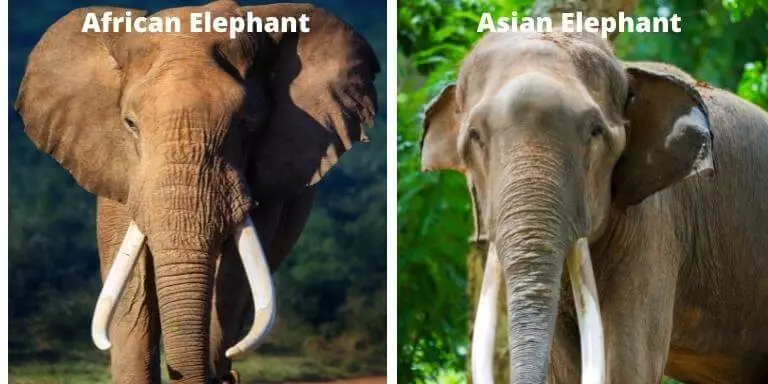
- African elephants.
- Asian elephants.
The African ones have 2 more subspecies which are, - The African forest ones (Loxodonta africana cyclotis) and
- The African savanna (Loxodonta africana) ones.
The Asian mammoths have 4 more subspecies which are, - Mainland (Elephas maximus indicus)
- Sumatran (Elephas maximus sumatranus)
- Srilankan (Elephas maximus maximus) and
- Borneo (Elephas maximus borneensis)
Comparison of Physical Appearance
Body
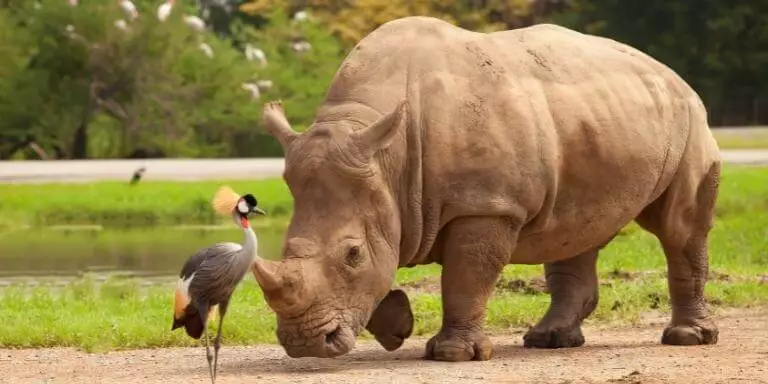
A rhinoceros has an immense physical structure with unbreakable armor. His muscled short shoulder carries the huge head and the breathtaking horns on its nose. The skin is wrinkled in places and has sparse hair. Their chests are broad and the humps are huge. The rhino has four stompy feet that are unbelievably agile.
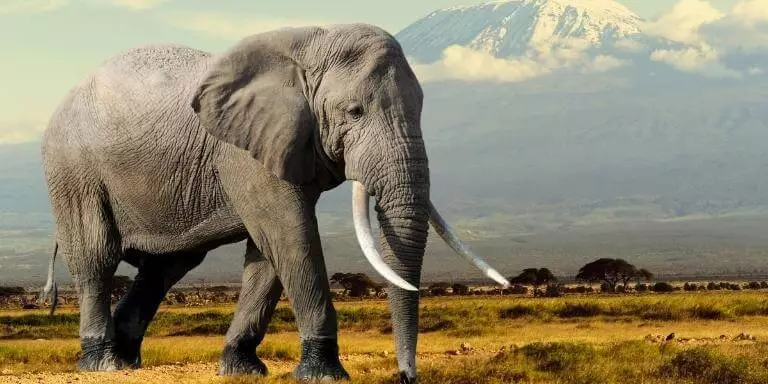
The elephant is like a massive truck from the front. Its shoulder looks to reach above the top of the trees. The long trunk and massive tusks are also worth mentioning. The broad ears are one-sixth the size of their entire body. Along with hearing the ear has the function of heat dissipating from the body. Elephants that live in the equator areas have larger ears from more heat dissipation. Their feet are the size of big poles. The unique design of the feet helps them to walk on rough lands.
Size and weight
Adult male rhinos can be 6 feet tall and 2300 kilograms heavy. Females can be 1800 kilograms heavy.
The male elephants can be 7 to 13 feet tall and 2 to 7 tons heavy. Whereas females can be 3 to 4 tons heavy. Their body length can reach up to 24 feet. Their eastern counterparts can reach a height of about 6.6 to 11.5 feet. The body length is between 18 to 21 feet. They weigh between 2000 to 5000 kilograms.
Color
The most famous rhinos are the black and the white ones. But their body color does not follow their names. Because both of them are greyish. Their eastern counterparts also have mostly grey skin. Indian types have silver skin whereas the Sumatran ones are reddish or brownish.
The overall color of the adult African and Asian elephant is grey.
Skin and hair
Rhino skin is susceptible to sunburn. The thickness of the armor is about 2 inches. However, it is not bulletproof entirely. Their body has sparse hair on their ears and shoulders. Calves have more body hair than adults.
Elephant skin is wrinkled. Eastern ones have more wrinkles than the western ones. It is grey. The thickness is about 1.5 inches. Their body hair is scattered at different places especially on the eyelid, the trunk, the shoulder, and the tail. Toddlers naturally
Have more hair than the grownups.
Mouth
Rhino lips can be square, hooked, or pointy. Some species have pointy front teeth to fight off the competition.
Elephants’ mouths are transformed into long trunks. The trunk is a multifunction organ and is made of thousands of muscles and bones. Many nerve endings are also available at the edge of the organ.
Teeth and horn
The Rhinoceros has 24 to 34 teeth. Naturally, they are mostly premolars and molars. The canine and incisors are also developed as grinding tools. Except for that in Indian species. Their lower canines develop into deadly weapons. They have single or double (varies with species) prominent horns on the nose.
The African Elephant has molar and premolar teeth on the inside of the mouth. But the 2 Incisor teeth are enormous and can weigh a lot. The two tusks can grow up to 6 feet long and can weigh up to 50 kilograms for the males and up to 20 kilograms for the females.
Diet

Rhinos and elephants both are herbivorous beings. Rhinoceroses love eating fresh grass, berries, barks, and fruits.
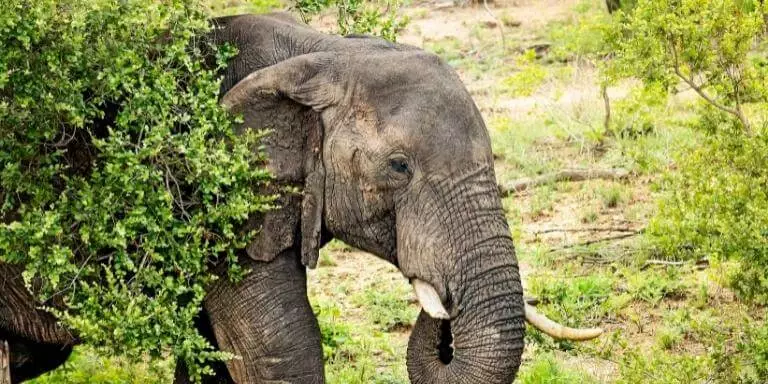
The behemoths are mainly vegetarian. But they can’t avoid eating protein for their huge appetite. They consume a wide variety of plants such as grass, shrubs, bark, leaves, fruits, etc. As a result, they inevitably eat the bugs, ants, bird eggs, etc on the vegetation they consume.
Rhino vs Elephant Speed Comparison
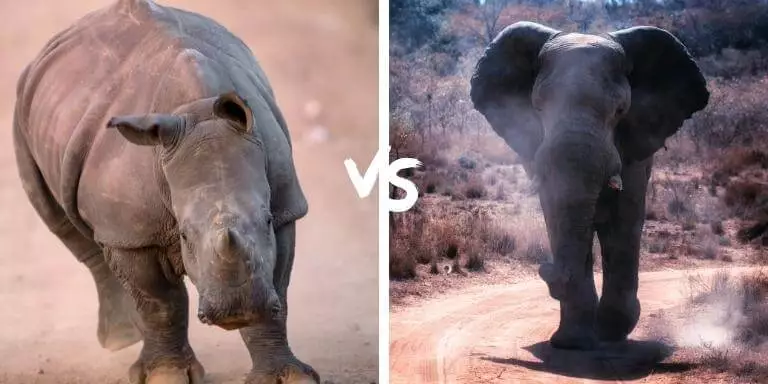
The Rhino has a monstrous speed of 50 kilometers per hour and is unbelievably agile.
The average Elephant can run up to 40 kilometers per hour. That speed is no joke when the moving object has a mass of 7 tons.
Behavior
Rhinos are solitary beings. They are also very territorial. The males mark their territory using urine and will fight to defend their land. Females choose their partners depending on the territories. The females don’t have any particular territory to defend. Rather they move from one territory to another as per need.
They use their prominent horns to protect their land from the opposition and to protect themselves from carnivores in the wild.
Their functioning is simple- they sense something unfamiliar, they charge towards it. Attacks can either come from aggression or curiosity.
Adult Elephants often show features that are related to higher intelligence. Such as mimicry, grief, compassion, self-love, etc. The Elephant is a peaceful creature. But the males can be very aggressive during musth. Females show aggression when with a child.
Habitat
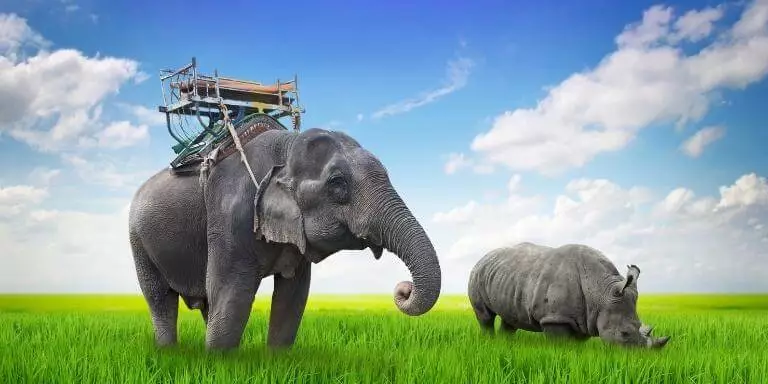
Rhinos are found in Africa and Asia. They have an amazing ability to survive in different habitats such as rainforests, savannahs, wetlands, grassy plains, deserts, etc.
They prefer habitats with vegetation, mud holes, and trees with dense shade. However, most of their population is distributed in the countries- Kenya, Namibia, South Africa, Swaziland, Tanzania, Zimbabwe, and Botswana.
Elephants are found in rainforests in central and west Sub-Saharan Africa and the deserts of Mali. The Asian ones live in Nepal, India, and Southeast Asian forests and rainforests.
Population and Reproduction
At the beginning of the 20th century, about 500,000 rhinos roamed the planet. But in the 1970s about only 70,000 of them were left. But today only 27,000 are alive. This is the result of excessive poaching.
Previously 1.3 million Elephants were roaming the planet but now only 400,000 of them are left in Africa. In Asia, there are about 200,000 left. But these numbers are still decreasing daily. However, a pregnant female carries her single baby for about 18 to 22 months.
Conservation Status
At present, numerous organizations are working to protect the Rhino from being slaughtered. Due to their active conducting, the graph of the population of the animal is seeing an upward slope after a long time.
Still, all the species of the animal are listed as “Endangered” on the IUCN red list. But the three types-Black, Javan, and Sumatran are listed as “Critically Endangered”
Both the African and the Asian giants are listed as “endangered” on the IUCN red list.
Lifespan
The Rhinoceros can live up to 35 to 50 years in the wild. But this number can increase in the zoo.
Wild Elephants naturally live longer than those in captivity. Wild African giants can live up to 60 to 70 years on average. But their captive counterparts are found to be dead before the age of 40.
Predator Attacks
Rhinos are mercilessly hunted by humans. Their main threat is the human species. Other wild beings such as lions and crocodiles also try to attack them if found in a vulnerable position.
Hurt or weaker elephants are attacked by lions and hyenas. Babies are often attacked by crocodiles in the water.
Fun Facts about Rhino and Elephant
- Rhinoceros horns can grow back if broken or harmed. But the meat mountains have their tusks only once in their lives.
- The Rhino is a solitary being. But the Elephants are social in many aspects.
- The ivory of the Elephant is considered a material of wealth. But the rhino horn is used in traditional medicinal fields of many asian countries.
Conclusion
Rhinoceros vs elephant fight is a monstrous fight. Though the Elephant is strong enough to toss away the Rhino but they have huge horns as an advantage. Some right blows with that keratin weapon can leave any opponent with serious injuries.
You might also be interested in:
